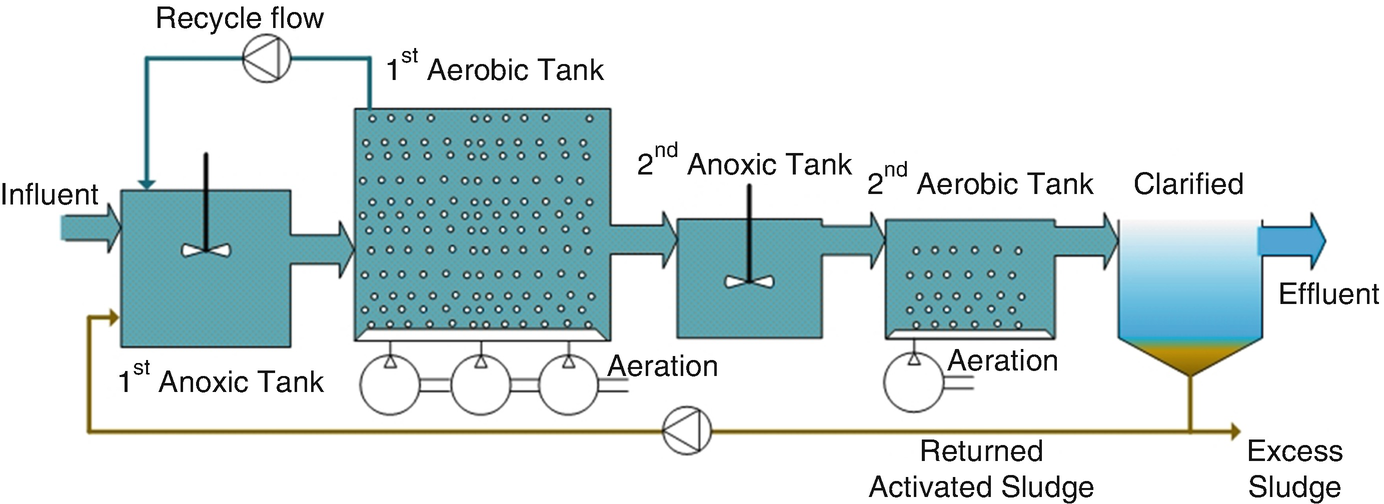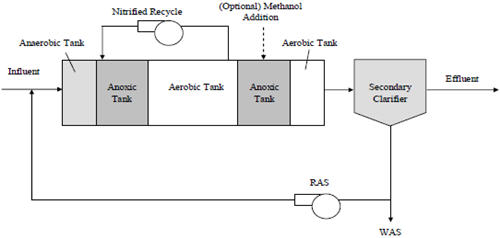Uct Process Wastewater Treatment / Biological Nutrient Removal In Municipal Wastewater Treatment New Directions In Sustainability Journal Of Environmental Engineering Vol 138 No 3 - Some of the ways that different effluent treatment processes can remove contaminants:
Uct Process Wastewater Treatment / Biological Nutrient Removal In Municipal Wastewater Treatment New Directions In Sustainability Journal Of Environmental Engineering Vol 138 No 3 - Some of the ways that different effluent treatment processes can remove contaminants:. Generally, untreated wastewater contains high levels of organic material. However, the primary one is to counteract medical problems that arise from untreated water. The city's wastewater treatment plant and utility is funded by revenue from residential and commercial wastewater rates. A number of physical, chemical and biological processes operate concurrently in constructed and natural wetlands to provide contaminant removal ( figure 1 ). Anaerobic treatment or digestion is a two step process.
Some of the ways that different effluent treatment processes can remove contaminants: Wastewater treatment plants are designed to convert liquid wastes into an acceptable final effluent and to dispose of solids removed or generated during the process. Every day, wastewater goes down the drains from homes, schools, businesses, and factories and flows into new york city's sewer system. This makes the wastewater treatment process crucial to our health. Secondary treatment, which removes about 90% of the pollutants and completes the process for the liquid portion of the separated wastewater.

A bar screen is usually used to remove large items from the influent and ultimately taken to a landfill.
Some of the ways that different effluent treatment processes can remove contaminants: A number of physical, chemical and biological processes operate concurrently in constructed and natural wetlands to provide contaminant removal ( figure 1 ). Some wastewater treatment processes have been established for many years, but that does not mean that they are static. We will analyze your wastewater properties, load capacity and design requirements to provide a solution that is both efficient and effective. The treatment processes in wastewater treatment plants can be divided into different stages. In the first stage, the still completely untreated wastewater is mechanically treated; A bar screen is usually used to remove large items from the influent and ultimately taken to a landfill. The city's wastewater treatment plant and utility is funded by revenue from residential and commercial wastewater rates. Basically wastewater treatment is a simple process to convert the wastewater into the bilge water which can then be discharged back to the environment. Prepared by the document is intended to provide guidance on advanced wastewater treatment technologies measures at etp, cetp as well as stp to improve treated water quality by advanced treatment. Another oxidizing agent used for purifying the wastewater is ozone. Methods of waste water treatment depends on composition of waste water and required quality for treated water. Treating wastewater is rarely a static process, and a wastewater treatment system that is engineered to accommodate fluctuations in treatment needs will go a long way in avoiding costly replacements/upgrades down the line.
Some wastewater treatment processes have been established for many years, but that does not mean that they are static. This makes the wastewater treatment process crucial to our health. However, the primary one is to counteract medical problems that arise from untreated water. The conventional wastewater treatment methods are used to reduce the amount of suspended or floatable materials and treatment of biodegradable organic matters. The treatment processes in wastewater treatment plants can be divided into different stages.

Chemical water treatment as the name suggests, this treatment involves the use of chemicals in water.
Wastewater typically contains pathogens, and usually organic matter which allows the pathogens to multiply, and absorbs oxygen from the water. Some of the ways that different effluent treatment processes can remove contaminants: Wastewater treatment is a vital part of making sure that we live in a pleasant and healthy environment. Anaerobic treatment or digestion is a two step process. In most areas of the city, the combined sewer system collects and conveys wastewater and stormwater runoff from streets. The belt filter press system and other wastewater treatment techniques like chemical dosing exist for various reasons. Secondary treatment, which removes about 90% of the pollutants and completes the process for the liquid portion of the separated wastewater. Another oxidizing agent used for purifying the wastewater is ozone. Wastewater treatment or sewage treatment is a process to improve the water quality, removing some or all of the contaminants, making it suitable for reuse or discharge back to the environment. Special processes are required for the. Chemical water treatment as the name suggests, this treatment involves the use of chemicals in water. The treatment plant removes contaminants from the wastewater and discharges clean, disinfected effluent into the oldman river south of peenaquim park. We will analyze your wastewater properties, load capacity and design requirements to provide a solution that is both efficient and effective.
Adapted to small and medium sized communities. In the first stage, the still completely untreated wastewater is mechanically treated; The belt filter press system and other wastewater treatment techniques like chemical dosing exist for various reasons. Treating wastewater is rarely a static process, and a wastewater treatment system that is engineered to accommodate fluctuations in treatment needs will go a long way in avoiding costly replacements/upgrades down the line. Wastewater treatment or sewage treatment is a process to improve the water quality, removing some or all of the contaminants, making it suitable for reuse or discharge back to the environment.

The treatment processes in wastewater treatment plants can be divided into different stages.
Wastewater treatment basically takes place in three stages: Depending upon the size or the volume of wastewater from an biological effluent treatment is generally carried out in a continuous mode of operation, since large amount of anaerobic treatment: Ban wastewater treatment relies on the university of cape town. Wastewater treatment or sewage treatment is a process to improve the water quality, removing some or all of the contaminants, making it suitable for reuse or discharge back to the environment. Wastewater treatment is the process by which solids in the wastewater are partially removed and changed from complex, organic solids to facilities when you consider the different combination of processes which are used to treat wastewater. Knowledge of the basic concepts of these processes is. The preliminary treatment is a physical process of using large bars or screens to remove large pieces of garbage from the incoming wastewater (influent). As the word suggests, cleaning raw sewage is a process. Chlorine, an oxidizing chemical, is commonly used to kill bacteria which decomposes water by adding contaminants to it. It is done in stages up to the final stage where the water is released into the river. Treating wastewater is rarely a static process, and a wastewater treatment system that is engineered to accommodate fluctuations in treatment needs will go a long way in avoiding costly replacements/upgrades down the line. Some of the ways that different effluent treatment processes can remove contaminants: When considering what wastewater treatment plant process will best serve your needs, there are several options pollution control systems (pcs) can offer.
Komentar
Posting Komentar